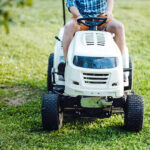More COVID-19 myths and facts: Test your knowledge

As the coronavirus outbreak continues to evolve, experts are learning more about COVID-19 every day, including how it’s spread, possible symptoms, and potential treatments. But with social media and the constant news stream, it can be hard to separate myth from fact. Test your knowledge of COVID-19 with our quiz.
[smartslider3 slider=24]Take our previous COVID-19 quiz and get more answers about Boston Children’s response to COVID-19.
Related Posts :
-

No limitations: How Flora found answers for MOG antibody disease
Flora Ringler’s fifth birthday didn’t turn out as she had hoped. She and her family were vacationing in ...
-

What orthopedic trauma surgeons wish more parents knew about lawnmower injuries
Summer is full of delights: lemonade, ice cream, and fresh-cut grass to name a few. Unfortunately, the warmer months can ...
-

Partnering diet and intestinal microbes to protect against GI disease
Despite being an everyday necessity, nutrition is something of a black box. We know that many plant-based foods are good ...
-

‘They never stopped trying to figure out what was happening’: RyennAnne’s encephalitis journey
When 5-year-old RyennAnne Hurst developed a bad sore throat last summer, her doctor thought she might have strep and prescribed ...





